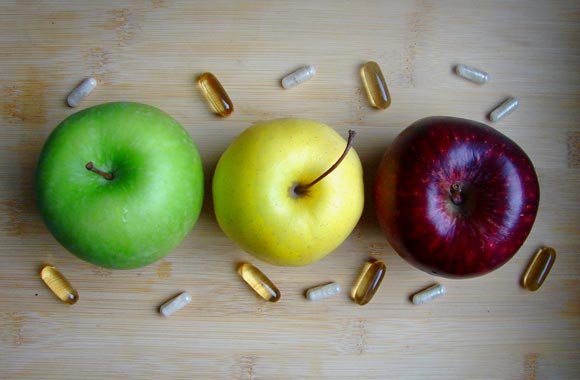What are the health benefits of minerals? What minerals should you take?

Minerals are micronutrients that are needed in a very small amount in our body which varies from a fraction of a milligram to several grams.
The Health Benefits of Minerals
More than 50 chemical elements are present in the body required for growth repair and regulation of vital body functions. Minerals are divided into three major categories.
- Major Minerals: Sodium, Calcium, potassium, phosphorus, potassium, and magnesium.
- Trace Elements: Iron, fluorine, zinc, copper, cobalt, chromium, manganese, molybdenum, selenium, nickel, tin, silicon, and vanadium.
- Trace Contaminants Without Function: Lead, mercury, barium, boron, and aluminum.
Only a few mineral elements result in a recognizable clinical situation in an individual.
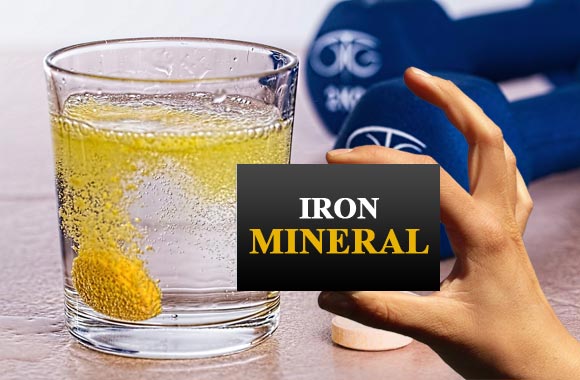
Iron Benefits
The iron mineral is part of the structure of many important body constituents e.g. hemoglobin, myoglobin, enzymes like cytochromes, catalases, xanthine oxidase, mitochondrial glycerophosphate oxidase, etc. The iron content of hemoglobin is 0.34%. The adult human being contains about 2-4gtam of iron of which 60-70% is present in the blood as circulating iron and the rest as storage iron. Recommended daily intake of iron in adults in 0.9 mg
There are two forms of irons:
- Heme iron
- Non-heme iron
Sources
Animal sources: Animal sources of food rich in heme iron are liver, red meat, poultry, and egg yolk. Milk is very low in iron. These are not only rich sources of iron but also readily increase non-heme iron absorption in plant foods eaten at the same time.
Plant sources: Foods containing non-heme iron are of plant origin and are rich in vegetables and including spinach and leafy vegetables, nuts, legumes, oilseeds, and jaggery. Dried fruits also contain appreciable amounts of iron.
Cooking in iron utensils increases the iron content of foods. Food that decreases iron absorption is milk, eggs, and tea.
Functions
Iron is necessary for many functions in the body including the formation of hemoglobin, brain development and function regulation of body temperature, muscle activity, and catecholamine metabolism. It is important for our immune system also. Lack of it directly affects the immune system; it diminished the number of T-cells and the production of antibodies. Besides hemoglobin, iron is a component of myoglobin, cytochromes, catalase, and certain other enzyme systems. Iron is essential for binding oxygen to the blood cells. The central function of iron is oxygen transport and cell respiration.
Losses
The total daily iron loss of an adult is probably 1mg and about 2 mg in menstruating women. Major routes of iron loss are
Hemorrhage: The cause of which may be psychological or pathological.
Basal Losses: These include excretion through urine, sweat, bile, and desquamated surface cells. The recent use of an intrauterine device is also an additional cause of iron loss.
Deficiency
There are three stages of iron deficiency that have been categorized.
The first stage is characterized by decreased storage of iron without any other detectable abnormalities
An intermediate stage of latent iron deficiency means iron stores are exhausted but anemia has not occurred as yet.
The third stage is an overt iron deficiency when there is a decrease in the concentration of circulating hemoglobin due to impaired hemoglobin synthesis
Deficiency Anemia
This is of hypochromic, microcytic type and is the most common type of anemia being especially present in women of childbearing age and infants below 1 year of age.
Characteristic Features
These include derangement of the epithelial surface such as abnormal nail growth that becomes spoon-shaped, others include glossitis, fissures around the mouth, pale skin, weakness, and fatigue. Thickening of the mucous lining of the esophagus also occurs with the resultant effect of difficulty in eating and swallowing.
Besides anemia, there may arise many other functional disturbances due to iron deficiency and these are impaired cell-mediated immunity; reduced resistance to infection; increased morbidity and mortality; diminished work performance.
Surplus
An increase in iron levels in the body results in a condition called hemosiderosis and it is seen in some people who eat food cooked in iron utensils.
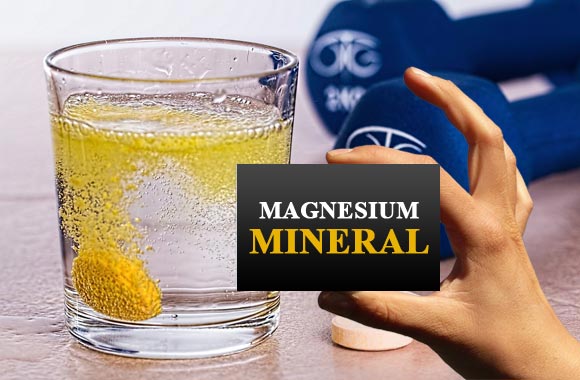
Magnesium Benefits
Magnesium barely qualifies as a major mineral. Only 0.028 kilograms of magnesium is found in the body of a 72 kg person. Almost half of the body’s magnesium is present in the bones. Most of the rest is in the muscles and soft tissues, with only 1 percent in the extracellular fluid. Bone magnesium seems to be a reservoir to ensure that some will be on hand for vital reactions, regardless of recent dietary intake.
Sources
Vegetables: Green and Leafy Vegetables, Spinach, Broccoli, Green Peas.
Fruits: Apple, Banana, Orange, Watermelon.
Seafood: All
Grains: Nuts, Legumes, Navy beans.
Animal: Chicken, Beef, Cod, Lean, Ham, Shrimp
In some areas, it is found in the water as well.
Functions in Body
Magnesium acts in all the cells of the soft tissues, where it forms part of the protein-making machinery and is necessary for energy metabolism.
It participates in hundreds of enzyme systems in the body.
A major role is as catalysts in the reaction that adds the last phosphate to the high-energy compound ATP. As a required component for ATP metabolism, magnesium is essential: To the body’s use of glucose; The synthesis of protein, fat, and nucleic acids; The cell’s membrane transport systems.
Along with calcium, it is involved in muscle contraction and blood clotting: Calcium promotes the processes, whereas magnesium inhibits them. This dynamic interaction between the two minerals helps regulate blood pressure and the functioning of the lungs.
Magnesium also helps prevent dental caries by holding calcium in tooth enamel.
Like many other nutrients, magnesium supports the normal functioning of the immune system.
Intakes
Dietary magnesium intakes average about three-quarters of the recommended intake for U.S. adults. Dietary intake data, however, do not include the contribution made by water. In some areas, the water contains calcium and magnesium (“hard water”) and contributes significantly to intake.
Deficiency
Even when average magnesium intakes are below recommendation, deficiency symptoms rarely appear except with diseases. Magnesium deficiency may result in cases of protein malnutrition, alcohol abuse, kidney or endocrine disorders, and due to prolonged vomiting or diarrhea. People using diuretics for a longer period may also show symptoms. A severe magnesium deficiency may lead to tetany similar to calcium tetany. Magnesium deficiencies also cause impairment of central nervous activity and are also found to be responsible for hallucinations experienced by people withdrawing from alcohol intoxication.
Hypertension
Magnesium is critical to heart function and seems to protect against hypertension and heart disease. It is found that people who live in areas of countries with “hard water” containing high levels of calcium and magnesium tend to have low rates of heart disease. As a result of magnesium deficiency, the arteries and capillaries’ walls tend to constrict, a possible mechanism for the hypertension effect.
Surplus Effects
These are not yet known. Large doses are usually taken in the form of laxative Epsom salts without ill effects except for complaints of diarrhea.

Manganese Benefits
Biomedical Importance: The human body contains a tiny 20 milligrams of manganese, mostly in the bones and metabolically active organs such as the liver, kidneys, and pancreas. In plasma, it is carried by a protein called Transmanganin.
In certain industries inhalation poisoning by manganese occurs and produces asthenia, anorexia, impotence, leg cramps, and speech disturbances; psychotic symptoms and Parkinsonian syndrome may also be seen.
Sources
This mineral is widely distributed in food. It sources include
Animal Sources: These include beef, kidney, liver, oysters, etc.
Plant Sources: These include carrots, blackberries, lettuce, pineapple, nuts, cabbage, green peas, spinach, avocado, honey, and lots of other foodstuffs.
Physiological Functions
Manganese though trace mineral still performs various important functions in our body including:
Manganese acts as a cofactor for many enzymes that facilitate dozens of different metabolic processes. For example, manganese metalloenzymes assist in urea synthesis, the conversion of pyruvate to a TCA cycle compound, and the prevention of lipid peroxidation by free radicals.
It takes part in oxidative phosphorylation and the metabolism of fatty acids, cholesterol, and mucopolysaccharide metabolism. It is involved in reactions catalyzed by diamine oxidase, pyruvate carboxylase, and mitochondrial superoxide dismutase.
It has a probable role in hemoglobin formation.
Manganese is found to reduce the symptoms produced by arthritis.
It decreases the glucose level of blood while increasing glycogen storage,
Its absorption is decreased due to a high intake of phosphorous and calcium and it is excreted through the bile
Deficiency
Manganese requirements are low, and many plant foods contain significant amounts of this trace mineral, so deficiencies are rare. As is true of other trace minerals, however, dietary factors such as phytates inhibit its absorption. In addition, high intakes of iron and calcium limit manganese absorption, so people who use supplements of these minerals regularly may experience depressed manganese status.
Clinical Symptoms of Deficiency
These include:
Abnormalities in the skeleton systems of the human.
There occur to increase in the risk of cancer in case of its extreme deficiency
The metabolism of lips and fats gets disturbed as well as impairment occurs in the production of the glycoprotein.
Glucose levels of blood also become impaired.
All these results from abnormalities in the synthesis of mucopolysaccharides due to deficiency of manganese in the body.
Surplus
Toxicity is more likely to occur from an environment contaminated with manganese than from dietary intake. Miners who inhale large quantities of manganese dust on the job over prolonged periods show symptoms of a brain disease, along with abnormalities of appearance and behavior such as an involuntary type of laughing, blurring of vision, impotence, tremors of the hands, a mask-like expression on the face and the gait abnormalities.
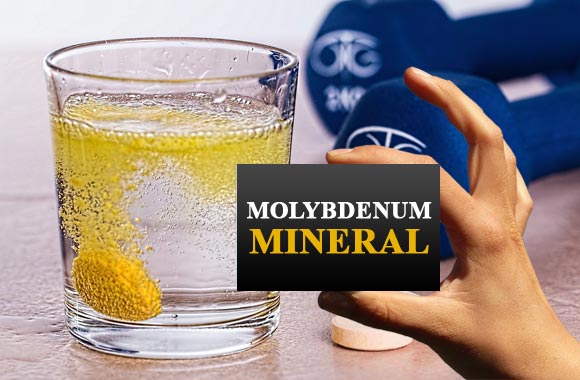
Molybdenum Benefits
Molybdenum mineral is the trace nutrient of our body which plays the role of being the active part of the various metalloenzymes. It is present in the enzyme namely the xanthine oxidase and liver aldehyde oxidase. Both of these enzymes are flavoproteins. It is present in several oxidation states and there, is facilitating the electron transfer in the oxidation-reduction reactions. It is a soluble nutrient and its absorption can be inhibited by the copper element in our body. The molybdenum content of the body is usually very low ranging from 0.1-1.0 mcg. In the body, it is found in high concentrations in the adrenal glands, kidneys, liver, and bones. It exists in another form the molybdate form.
Sources
It is found in organic meats, legumes, bread and cereals, milk products, and milk as well. Green leafy vegetables also contain it. The liver is one of the molybdenum-rich foods.
Functions
Molybdenum acts mainly as an enzyme cofactor. The molybdoenzymes which are three in number cause catalyzation hydroxylation of several substrates as follows.
Being part of sulfite oxidase, it enables this enzyme’s catalyzation process which then leads to the conversion of sulfite to sulfate. If sulfite oxidase is deficient it may lead to the derangement of cysteine metabolism.
Aldehyde oxidase causes detoxification and oxidization of various purines, pyrimidines, pteridines, and other related nitrogenous bases.
Xanthine oxidase/dehydrogenase catalyzes the reaction in which the conversion of hypoxanthine to xanthine takes place which is then converted to uric acid.
Deficiency
Molybdenum deficiency is not commonly seen unless the diet is very poor in molybdenum or contains high levels of the Molybdenum antagonistic elements e.g. tungstate, copper, or sulfate. It may also arise in the case of prolonged parenteral nutrition and may also be found to be associated with esophageal cancer.
Symptoms: The symptoms of its deficiency include hypouricemia (low uric acid in the blood) buccal mucosa and gum problems, hyperoxypurinemia, nervous system problems, and even coma especially seen in those patients who are on parenteral methionine therapy. Other deficiency symptoms include a significant increase in heart rate, disturbance of mental functions, and headache.
Acquired Molybdenum Deficiency: This causes an extremely low level of uric acid in the serum as well as in the urine (X0). There also arises a low inorganic sulfate amount in the urine (SO). These may be due to inborn errors of deficiencies of molybdenum cofactor or SO, and XO. XO deficiency is not very serious but benign. The patients who have single deficiencies of molybdenum cofactor or SO show various neurologic problems, mental retardation, or even ocular dislocation of the lens.
Surplus
This mineral is relatively safe to be used in the human body. However, extreme of its levels lead to symptoms of gout due to increased production of uric acid as well as hyperuricemia. Mostly seen when the level of molybdenum increases in diets above 15mg which is taken daily. There occurs inhibition of enzymes. Gout can lead to pain and deformity of the joints epically of fingers, toes, etc.

Nickel Benefits
Nickel is one of the trace minerals or micronutrients in our body since it is present in a very small amount in our body but it plays an important part in the overall health of the human body and bodily processes
Sources
It is found in many foods and these include both animal as well as plant sources.
Animal sources: These include eggs, milk, shellfish, and meat
Plant Sources: These include fruits, some vegetable nuts, grains, dried beans, leguminous seeds, and peas as well as chocolates and hydrogenated shortenings
Functions
Nickel is found to be beneficial being an important cofactor to various enzymes where it acts to accelerate the normal chemical reactions occurring in our body.
This element has been shown to take part in a reaction catalyzed by oxidoreductases and hydrolyzes (e.g. urease)
Nickel is in the RNA and DNA of our body where it functions in association with these nucleic acids.
It probably has a role in stabilizing RNA structure.
It is found to be helpful in normal bone functioning and health.
Nickel is an important factor in the cell membrane and the lipid also.
Daily Intake
The normal concentration included in supplements of this mineral is from 40 – 100 mcg per day. However, no dietary requirements have been fixed.
Deficiency
Since it is a trace element, deficiency of it is rare. But it is found that due low amount of nickel in the bodies of some individuals certain liver as well as kidney diseases arise them.
Surplus
Excessive use of nickel in the body is linked with a high incidence of certain thyroid diseases, heart disease, and even tumors. In all of these cases, the importance of the level of nickel in our bodies is not known. It is hypothesized that this trace element affects cell membranes, hormones, and various chemicals called enzymes.
In a nutshell, nickel certainly seems to play role in the human body and its health although the exact mechanism of its action is still not known.
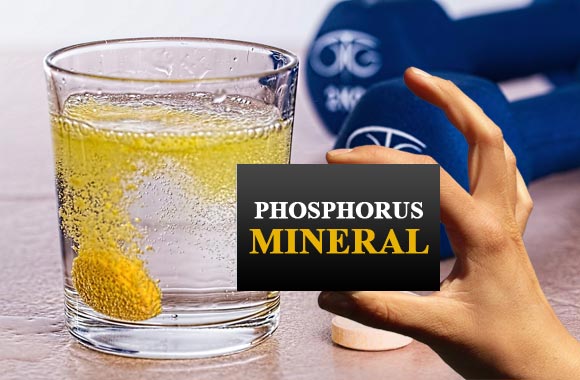
Phosphorus Benefits
Phosphorus is an important mineral in the body. The adult human being has about 700 grams of phosphorus which makes up about 1% of the body weight. About 85% of it is in the skeleton. The whole blood contains about 48 mg phosphorus/dL which is chiefly present in the form of inorganic phosphorus, organic phosphate esters, and lipid phosphorus. The red blood cells contain more phosphorus than the plasma and contain much more organic phosphate form.
Sources
Foods rich in calcium are also generally rich in phosphorus and these include milk which contains about 93% of phosphorus, beans, cereals, egg yolk, and meats. A large part of the vegetable phosphorus exists as phytates of calcium and magnesium which are insoluble and are largely not absorbed. A disadvantage of the phytates is that they interfere with the absorption of calcium, zinc, and iron. Phosphorus is also present in phosphate food additives.
Absorption and Excretion
The phosphorus ingested with foods is absorbed in the form of inorganic phosphate by an active energy-dependent process and about 2.3% of ingested phosphate is absorbed. The active form of vitamin D greatly stimulates the absorption of phosphorus. Its re-absorption is blocked by parathyroid hormone and therefore increased urinary loss of phosphorus. All forms of phosphorus are excreted via urine, and the phosphorus present in the feces is represented by the unabsorbed form.
Functions
Phosphorus takes part in the formation of bones and teeth; about 85% of body phosphorus is in the bones. The scleroprotein and collagen also contain phosphorus.
Phosphorus forms a part of the high-energy phosphate compound such as ATP, GTP, CTP, UTP, TTP, and creatine phosphate.
It is a constituent of nucleic acid both DNA and RNA, which are of great importance from the standpoint of protein synthesis, viruses, cancer, and genetics.
It is a constituent of phospholipids such as lecithin, cephalin, plasminogens, etc.
Phosphorus is an important constituent of cell membranes.
Phosphates are the most abundant anions present within tissue cells.
The plasma phosphate takes part in buffer action concerned with hydrogen excretion in urine for plasma pH regulation.
They form esters with sugars, for example, glucose 6 phosphate, fructose 6 phosphate, etc which take part in carbohydrates metabolism.
Deficiency
Deficiency of phosphorus rarely occurs since it is widely available in the foods we eat. In case deficiency occurs it may lead to hypophosphatemia which is associated with myopathy, cardiomyopathy, and symptoms due to osteomalacia which is bone pain and waddling gait. Children may show retard growth. A decreased level of 2,3BPG and ATP in red blood cells (RBCs) may result in tissue hypoxia.
Surplus
If high phosphorus levels are maintained for longer periods, then calcium phosphate may be deposited in abnormal sites and leading to a condition called hyperphosphatemia.
Intake
It has been suggested that phosphorus intake should be equal to calcium intake in most age groups except in infancy where the ratio considered good is 1:1.5.

Potassium Benefits
Like other minerals such as sodium, potassium is a positively charged ion of immense importance in the body. In contrast to sodium, potassium is the body’s principal cation inside the body’s cells. The adult human body contains about 250 grams of potassium. It is the third most abundantly found mineral and nutrient of the body.
Sources
Potassium is found widely in all foodstuffs. In animals and plants, sources are as follows:
Animal Sources: It is found in ground beef, cod, ham, lean, shrimp, chicken breast, milk, yogurt, buttermilk, sirloin steak, etc.
Plant Sources: These include spinach, carrots, broccoli, tomato juice, banana, grapefruit, avocado, green beans, white rice, etc.
Physiological Functions
Potassium plays a major role in maintaining fluid and electrolyte balance and cell integrity. During nerve transmission and muscle contraction, potassium and sodium briefly trade places across the cell membrane. The cell then quickly pumps them back into place. Controlling potassium distribution is a high priority for the body because it affects many aspects of homeostasis, including a steady heartbeat. It is food for combating allergies and arthritis. It also plays role in providing oxygen to the brain. It is also found to be beneficial in disposing of wastes in the body.
Recommendation and Intakes
As for sodium and chloride, a minimum potassium requirement for adults has been estimated. Potassium is abundant in all living cells, both plants, and animals. Because cells remain intact unless foods are processed, the richest sources of potassium are fresh foods of all kinds. People who emphasize fresh fruits and vegetables in their diet have high intakes of potassium, but toxicity is normally not a concern when the source is food.
Fresh foods, especially fruits, contain much more potassium than sodium. In contrast, most processed foods such as canned vegetables, ready-to-eat cereals, and luncheon meats contain more sodium and less potassium.
Deficiency
Potassium deficiency occurs more often due to excessive loss than to deficient intake. This condition may cause hypokalemia. Certain conditions such as diabetic acidosis, dehydration or prolonged vomiting, or diarrhea can create a potassium deficiency, as can the regular use of certain drugs, such as diuretics, steroids, and strong laxatives. For this reason, many physicians prescribe potassium supplements along with these potassium-wasting drugs. One of the earliest symptoms of deficiency is muscle weakness. It may also lead to muscle paralysis and a confusional and nervous state of mind.
Hypertension
Low-potassium diets seem to play an important role in the development of high blood pressure. Diets low in potassium raise blood pressure, whereas high potassium intake appears to both prevent and correct hypertension.
Surplus or Toxicity
Potassium toxicity can result from the overuse of potassium salt, especially in an infant or a person with heart disease; it does not result from overeating foods high in potassium.
Given more potassium than the body needs, the kidneys accelerate their excretion. If the GI tract is bypassed, however, and potassium is injected rapidly into a vein, it can stop the heart. There may also arise muscle weakness and vomiting.

Selenium Benefits
Selenium is the trace and essential mineral of the body. It is required in the body in small amounts but performs functions bigger than its amount.
Sources
Its dietary sources are both plants and animals;
Plant Sources: These include Brazil nuts, cereals mushrooms, brown rice, garlic, and whole wheat bread.
Animal sources: These include liver, fish such as salmon fish, shrimp, meat, beef, kidney, and brewer’s yeast along with milk, egg, and poultry.
Functions
Selenium is a part of Schwarz’s factor 3, which like vitamin E is very important for the body and gives protection against hepatic necrosis. Both of these are important for each other since they both tend to increase and enhance the functions of each other.
It is very effective in that it will exert its beneficial effect when it is present as 2 parts per 1,000,000,000 of the diet.
Selenium has been found to possess antioxidant properties as it is an integral component of glutathione peroxidase. This enzyme is essential in catalyzing reactions that are necessary for the removal of toxic peroxides. This enzyme is also an important part of the immunity system. It is also involved in the coagulation system of blood.
It is effective against osteoporosis
It is seen to regulate the level of serum cholesterol.
In the experimental animal, selenium has been found to give protection against several carcinogens, chemical as well as viral.
It also binds cadmium, mercury, and other metals and thus gives protection against their toxic effects.
Selenium administered in children suffering from kwashiorkor results in a significant weight increase.
Selenium supplements are now available and are used in treating growth-related problems as well as anemia.
After absorption selenium interacts with the sulfur-containing amino acids such as cysteine and methionine and forms the enzyme glutathione peroxidase and is then incorporated into many proteins, such as myoglobin and hemoglobin. Good absorption is dependent on the dietary selenium to sulfur ratio.
Deficiency
Clinically its deficiency produces Keshan disease, a disease that was once endemic in Keshan the province of china where selenium might be deficient in the soil of China. The clinical findings in this disease are found to be arrhythmias and cardiogenic shock, as well as peripheral myopathies, may also be seen. Children and women of childbearing age are particularly susceptible to this disease.
If selenium is not in an adequate amount, antioxidation will not take place, and chances of premature aging may increase.
Poisoning of metals can occur due to a lack of it in the body.
Skin and hair growth will be affected due to its deficiency.
Immunity will be affected since there may be decreased production of white blood cells take place as a result of its deficiency.
Surplus
Selenium toxicity can occur after ingestion of water containing a large amount of metal. If its levels are high, it is excreted in the urine. The clinical finding is that de-pigmentation of skin, hair loss, weariness, abnormal nails, and a garlic-like odor from the breath even without garlic ingestion are the signs or indications of toxicity of selenium.

Sodium Benefits
People have held salt in high regard throughout recorded history. The sodium mineral is found in all body fluids. The adult human body contains about 100 grams of sodium ions. It is present in salts and people find its taste immensely appealing. Sodium is the main cation outside the cells and one of the electrolytes primarily responsible for maintaining fluid balance It is lost from the body through urine and sweat; the sodium which is passed out of urine is regulated by the kidney but that which is lost by sweating is not controlled.
Sources
It is present in table salt, soy sauce, moderate amounts in meat, milk, bread, vegetables, cornflakes, salted peanuts, and a large amount in processed foods. It is normally added to food during cooking as sodium chloride.
Daily Requirements
The adult requirement of sodium is about 10-15 g.
Functions
It is the principal cation of the extracellular fluid and the primary regulator of its volume. People who do hard work or strenuous exercises need more sodium.
It helps maintain an acid-base balance.
It is essential for nerve transmission and muscle contraction.
It maintains electrolyte balance as well.
Foods usually provide more sodium than the body needs. It is readily absorbed by the intestinal tract and travels freely in the blood until it reaches the kidney, which filters all the sodium out of the body.
When blood sodium rises as when a person takes too much salt in its food, it enters the body and captures water resulting in cell dehydration which evokes thirst and the person drinks water until the appropriate sodium to water ratio is restored.
Deficiency
If blood sodium drops as may occur in vomiting, diarrhea, or heavy sweating both sodium and water must be replenished. Under normal conditions of sweating due to exercise, the salt loss can easily be replaced later in the day with ordinary food. It can lead to low blood volume and low cardiac output, therefore, low BP.
During intense activities, such as ultra-endurance events, persons can lose much sodium and drink so much water that they develop hyponatremia which means very little sodium in the blood. Beverages with sodium and glucose and salty foods will help restore sodium balance.
Depletion of sodium may lead to muscular cramps, mental apathy, and loss of appetite.
Surplus
The immediate symptoms of acute sodium toxicity are edema and hypertension, but such toxicity poses no problem as long as water needs are met. Prolonged excessive sodium intake may contribute to hypertension in some people.
Hypertension
For years, a high sodium intake was considered the primary factor responsible for high blood pressure. The research pointed to salt as the dietary culprit. Salt has a greater effect on blood pressure than either sodium or chloride or in combination with other ions. Consequently, health recommendation advises limiting daily salt intake to less than 6 grams.
Osteoporosis
A high sodium intake has also been associated with calcium excretion and bone loss. Dietary advice to prevent osteoporosis might suggest eating more calcium-rich foods while eating fewer foods high in sodium.
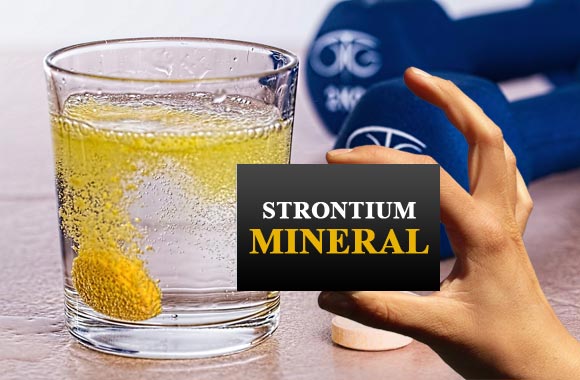
Strontium Benefits
Strontium mineral is a non-essential trace element. Clinically, it performs functions like calcium because of its in vivo relevance with calcium. It causes calcium to be retained in the body. Strontium Ranelate can be used in the treatment of osteoporosis because of this similarity. Strontium serum or plasma level is measured to check the compliance and even accumulation possibility in the patients. It is present in little amounts in our bodies. It is known to be very beneficial in the health of teeth as well as bones.
Sources
Strontium is present in many foods especially grown in strontium-rich soil along with some drinking water. The level of strontium in the plants is quite related to the strontium level in the soil where it is grown. It is available in various forms such as strontium chloride, strontium carbonate, strontium gluconate strontium sulfate, and strontium citrate. It is easily absorbed by the body. It is found in various root vegetables including Radishes, Turnips, Carrots, and Potatoes.
Functions
This is a trace element that is quite different from a radioactive isotope. The actions of strontium in the body are quite similar to those of calcium. They both have the same transport carrier protein. This similarity of functions is because it causes prevention of the osteoclastic resorptive effects of the bone; therefore it helps in reducing bone loss. Strontium can also result in stronger teeth.
It performs certain important functions in the body which are as follows:
Strontium is beneficial in preventing cavities.
Strontium helps reduce the loss of bone minerals in osteoporosis.
It has been found important in reducing fractures and it is possible if it is used in the normal range.
These days strontium supplements are available in the market which is quite beneficial to our body if taken within normal range.
Recommended Daily Dose
Since this mineral is not essential, therefore, it is daily recommendation has not been established. However, 10 milligrams to 1000 milligrams daily is considered to be the therapeutic dose.
Deficiency and Symptoms
Its extreme deficiency can lead to poor bone mineralization. But this element is not so essential so a deficiency of this mineral is rarely seen.
Surplus/Toxicity
There are no known symptoms or effects of strontium overdose or toxicity. So strontium is found to be safe in use.

Sulfur Benefits
The sulfur mineral is present in all the cells of the body as a constituent of S-containing amino acids. Keratin is very rich in the S- containing amino acid cysteine. It is ingested in the form of proteins which are usually methionine and cysteine. The body does not use elemental sulfur or inorganic sulfates.
Sources
The major food sources of sulfur are proteins that contain methionine and cysteine. The body manufactures cysteine from its precursor methionine. Other sources of sulfur include
Animal sources: These include egg, poultry, milk, pork meat especially beef, etc.
Plant sources: The plant sources of sulfur are beans, nuts, cabbage, sprouts, garlic, turnip, Brussels, lettuce, kale, etc.
Excretion
About 1 gram of sulfur is normally excreted in the urine every day. The sulfur in the urine occurs in the following forms:
Inorganic sulfate: This represents the completely oxidized sulfur and an amount of 0.8 grams/day. It is increased with a high protein diet and in case of fevers. It is decreased in severe kidney diseases due to decreased excretion.
Neutral sulfate: This on average amounts to 0.12 grams per day and consists of several sulfur compounds such as cysteine, methionine, urochrome, thiosulfates, thiocyanates, bile acids, and taurine and its derivatives.
Etheral sulfate: This fractions amount to 0.08 grams/day. It is represented by the sodium and potassium salts of sulfates of indoxyl, phenol, and cresol. The ethereal sulfates represent detoxification compounds of phenols and are formed in the liver.
Functions
It is a constituent of very important compounds present in our bodies. These include biotin, thiamine, coenzyme A, insulin, lipoic acid, glutathione, chondroitin sulfate, taurine, vasopressin, oxytocin, etc.
Its other functions include conjugation of sulfate with various toxic compounds formed in the body e.g. indoxyl, phenols, etc. it acts as a detoxifier and gets the body rid of various harmful toxins.
It is also a part of amino acids which are the building blocks of our body.
It plays a role in cellular respiration where it enables the cells to use the oxygen effectively. This thing enhances cell activity as well as improves the functions of the brain.
Sulfur also has a role in the metabolism of important vitamins such as vitamin B1 and vitamin B5.
Since it is present in the nails, hair as well as skin it makes them strong and keeps them healthy
It also plays a significant role to produce collagen which is essential for earlier wound healing.
It is also found to have some anti-aging properties and is also found to be beneficial in treating diseases such as arthritis where it is known to provide some sort of relief.
It is used in the formulation of certain drugs such as sulphonamide group drugs as well as sulfonylureas.
Deficiency
Normally people get enough quantities of Sulfur from their foods or diets so the chances of its deficiency are not that much. But in the case where it is very deficient in one’s food following symptoms of its deficiency may arise; There occur some skin problems/disorders, nerve disorders, muscle pain, circulatory trouble, inflammation, arthritis, constipation damages resulting from free radicals, infection, wrinkles, and even stress.
Surplus
There has been no known toxic effect is seen in case sulfur is ingested in large amounts. It will only lead to increasing methionine and cysteine contents.
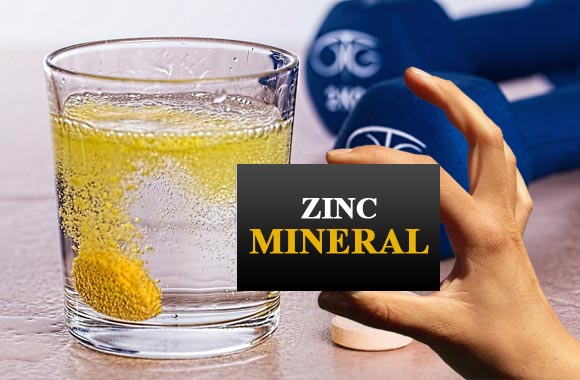
Zinc Benefits
Zinc mineral is the component of more than 300 enzymes. It is present in small amounts in all tissues but the highest concentration is found in bones, the prostate gland, and the eyes. It is a versatile trace element in our body. Zinc plasma level is about 96µg per 100 ml for healthy adults and 98 µg per 100 ml for healthy children. The average adult body is composed of about 1.4-2.3 grams of zinc.
Sources
It is widely distributed in foodstuffs both of animal as well plant origin.
Animal Foods: These contain zinc in milk, meat, yogurt, fish, chicken, oysters, crab lean, and poultry.
Plant Foods: Zinc is present in vegetables as well as in fruits. These include spinach, broccoli, tomato, green beans, green peas, whole wheat, lentils apple, banana, oranges, etc.
Functions
Zinc takes part in a large number of enzymes reaction such as those catalyzed by transferases, hydrolases, lyases, isomerases, ligases, oxidoreductases, transcription factors, and specific enzymes including RNA polymerase, glucocorticoids receptors, uricases, carbonic anhydrase, lactate dehydrogenase, alkaline phosphatase, and alcohol dehydrogenase.
Zinc is also involved in nuclei acid dehydrogenation.
It assists in immune functions and growth and development. Since it is present in white blood cells.
Zinc is important for the normal functioning of the reproductive, dermatologic, neurologic, and gastrointestinal systems.
It is essential for normal sperm production, normal embryonic development, and normal cell division and differentiation.
It helps protect the body from heavy metal poisoning for example poisoning by lead.
It interacts with platelets in blood clotting, affects thyroid functions, and influences behavior and learning performances.
Zinc is necessary to produce the active form of vitamin A in visual pigments and the retinol-binding protein that transports vitamin A.
Zinc is important for normal taste perception as well as in wound healing.
Deficiency and Symptoms
Human zinc deficiency was first reported in the 1960s in Turkey, Egypt, and Iran in young children. Middle Eastern diets are low in zinc-containing food such as meat, legumes, etc so they mostly suffer from its deficiency.
The severe growth retardation and arrested sexual maturation characterize zinc deficiency. In addition, it hinders digestion and absorption, causing diarrhea which worsens malnutrition not only for zinc but for all nutrients. It impairs the immunity of a person, causing him to be more prone to infections. Chronic deficiency of zinc damages the nervous system as well as brain functioning. It also disturbs thyroid functions and metabolic rate. It alters taste sensations, causes anorexia, and slows wound healing. Its symptoms are so all-pervasive that generalized malnutrition and sickness are more likely to be the diagnosis than simple zinc deficiency.
The deficiency of zinc is common among pregnant women, young children, the elderly, and the poor. Even a mild deficiency of zinc can result in poor growth, poor appetite, and abnormal vision in darkness.
Surplus
Accidental high doses of zinc may cause vomiting, diarrhea, exhaustion, excessive salivation, fever, cough, and leukocytosis. Zinc toxicity may develop in welders and those receiving excessive intravenous intake.

Copper Benefits
The amount of copper mineral in an adult body is estimated to be 100-150mg. It is a micronutrient which means it is needed in a small amount.
Sources
Copper is widely distributed in nature. Even poor diets provide enough copper for human needs. The liver is the richest source of copper having 4-5 percent of it. It is found in legumes and many other foods. Milk is however deficient in it. 10 percent of it is absorbed and the remaining passes out of the feces. The fecal copper includes a small part that is initially excreted in bile.
Containing Substances
These are the following:
Ceruloplasmin or hemocuprein: It is a serum protein, blue-green in color, which has 0.35% copper. 90% of the plasma copper is in combination with ceruloplasmin and the rest is probably bound with albumin.
Erythrocuperin: It is a copper-containing protein present in red blood cells which normally have about 30 mg of this protein/dL of packed cells.
Cerebrocuperin: It is a protein that is present in the brain.
Copper-containing enzymes: These include cytochrome oxidase, catalase, tyrosine, uricase, monoamine oxidase, and ascorbic acid oxidase. Superoxide dismutase present in the RBCs is also a copper continuing enzyme.
The average serum copper level is 114µg/dL. It is increased in pregnancy, various infections, Hodgkin’s disease, collagen disease, hyperthyroidism, and hemochromatosis. Hypocupremia is seen in Wilson’s disease, malabsorption syndrome, nephritic syndrome, and kwashiorkor.
Functions
It is needed for the formation of red blood cells.
It is needed for better transport of iron from iron reserves to the plasma; release of iron from the reservoirs and mitochondrial production of heme.
Copper may have a role in the absorption of iron from the intestine. The copper continuing proteins of the plasma, ceruloplasmin helps in the absorption of iron from GIT, it probably acts as ferroxidase catalyzing the conversion of ferrous to ferric which is then taken up by apoferritin.
Copper increases the effectiveness of iron therapy in the treatment of nutritional anemia in infants.
Deficiency
Copper is found in most foods so a dietary deficiency of copper is almost impossible. Human beings liable to suffer from its deficiency include infants fed an exclusive milk diet, those who have undergone intestinal bypass surgery, persons on parental nutrition, and those who take an excessive amount of zinc. Its deficiency results in anemia, retardation of growth, degenerative changes in the aorta, elastin, mental deterioration, and scurvy-like changes in the skeleton. One of its best-documented abnormalities due to its deficiency is neutropenia.
Surplus
Normally it does not lead to toxicity if it’s ingested in a large amount but there arise two diseases due to problems in its metabolism leading to the excess amount of copper in the body. These are
Wilson’s Disease (hepatolenticular degeneration)
It is a rare disease that is caused by an autosomal recessive disorder that leads to increased absorption of copper from the small intestine but a decrease in biliary secretion. An excess of copper, therefore, is present in the liver, the lenticular nucleus of the brain, and Descemet’s membrane of the cornea.
Menke’s Disorder (Steely hair syndrome)
It is an X-linked genetic disorder that is associated with poor copper absorption. Its signs are kinky hair, failure to grow, mental deterioration, and degenerative changes in the metaphysic of bones and the elastin.
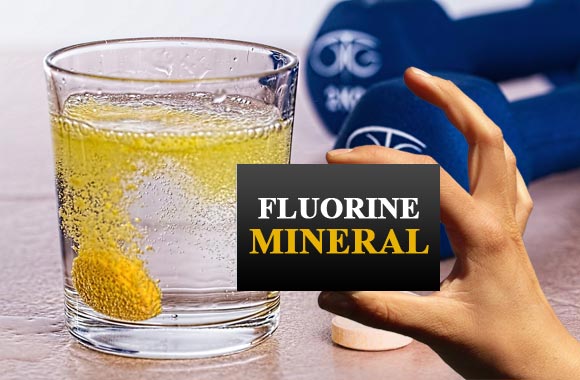
Fluorine Benefits
Fluorine mineral is the most abundant element in nature being so highly reactive. It is never found in its elemental gaseous forms but only in combined form. About 96% of the fluoride in the body is found in bones and teeth.
Sources
It occurs widely distributed in nature as fluorides. The principal sources of fluorine available to man are
Drinking Water: The major source of fluorine to man is drinking water. The fluorine content of water is found to be 0.4mg/L but in fluorosis-endemic areas, it may be as high as 3-11mg/L.
Foods: It occurs in traces of many foods but some foods such as sea fish, cheese, and tea are found to be rich in fluorides.
Functions
Fluorine is the inhibitor of several enzymes.
It is essential for the normal mineralization of bones and the formation of enamel. Fluorine produces hardening of teeth and bones. Its deficiency has shown to result in an abnormal increase in the incidence of dental caries and possibly osteoporosis.
Fluorides are being added to the toothpaste and even applied as such in children as a prophylactic against dental caries and it, therefore, prevents decay or cavity formation in them.
It is found to be important in preventing certain heart diseases.
Deficiency
Fluorine is often considered a two-edged sword. Its deficiency is associated with tooth decay and delay in the mineralization of bones, therefore, leading to dental caries as well as osteoporosis of the bones respectively.
Surplus
Prolonged ingestion of fluoride through drinking water above the daily requirement is associated with dental and skeletal fluorosis. Fluorosis is a condition due to a very high intake of fluorine. It produces brown staining of teeth or even leads to dental mottling. The bones of the skeletal system show excessive density. The fluorosis may lead to calcification of the ligament and the vertebral spine is usually more affected by this disease. Nausea, abdominal pain, vomiting, diarrhea, tetany, and cardiovascular collapse may be seen in this condition.
Daily Requirement
The recommended and optimum level of fluorides in drinking water has been placed at 3.75 parts/million. In temperate countries where the water intake is low, the optimum level of fluorides in drinking water is accepted as 1-2 mg per liter.

Iodine Benefits
The iodine mineral is an essential micronutrient. The adult human being contains about 50 grams of iodine and the blood level is about 8-12 micrograms. Iodine occurs in two forms:
Inorganic or filterable ionic form: This represents about 0.5% of the total plasma iodine. On the usual diet, plasma iodide level is 0.3-0.5 µg
Organic or hormonal iodine: This iodine is the part of the thyroid molecule which mostly occurs as bound with specific plasma protein.
Sources
Animal Sources: The best sources of iodine are the seafood that is sea fish, sea salts, etc, and cod liver oil. It also occurs in smaller amounts such as in milk, meat, and poultry.
Plant Sources: It is found in turnips, cabbage, carrots, peas, peaches, leafy vegetables, cereals, etc.
About 90% of iodine that enters our body is from the food we eat and the remainder from the water. The iodine content of the soil determines its presence in both water and locally grown foods. The deficiency is genomic, therefore.
Goitrogens: These are the chemical substances leading to the development of goiter. They interfere with iodine utilization by the thyroid gland and they may occur in food and water. The basic group of vegetables e.g. cabbage, cauliflower, turnips, peas, carrots, etc contains a high amount of iodine within themselves. The most important of them are probably cyanoglycosides and the thiocyanates
Function
It is required for the synthesis of the thyroid hormones, thyroxine, and tri-iodothyronine, the normal levels of these thyroid glands are very necessary for our body.
It is also necessary for the normal human growth and development and well-being of all humans.
It plays an essential role in the formation of the nervous system of the fetus.
It is beneficial in overcoming fibrocystic breast disease due to its effects on estrogen receptors present in the breast.
It protects our bodies from the dangerous effects of radioactive substances.
It also seemed to play an important role in the development of fingernails, hair teeth, and skin.
Deficiency
The most obvious consequence of iodine deficiency is goiter but recent research has indicated that there is a much more spectrum of diseases some of them are so severe as to be disabling. These include:
- Hypothyroidism
- Retarded physical development and impaired mental function
- Increased rate of spontaneous abortion and stillbirth
- Neurological cretinism including deaf-mutism
- Myxedematous cretinism includes dwarfism and severe mental retardation.
To express this, endemic goiter is now replaced by the term iodine deficiency disorders to refer to all the effects of iodine deficiency on human growth and development which can be prevented by correcting of iodine deficiency
Requirement
The daily requirement of iodine for adults is 150 micrograms per day. This amount is normally supplied by well-balanced diets and drinking water except in certain regions where food and water are deficient in iodine.
Surplus
An excess intake of iodine can lead to thyrotoxicosis and goiter.
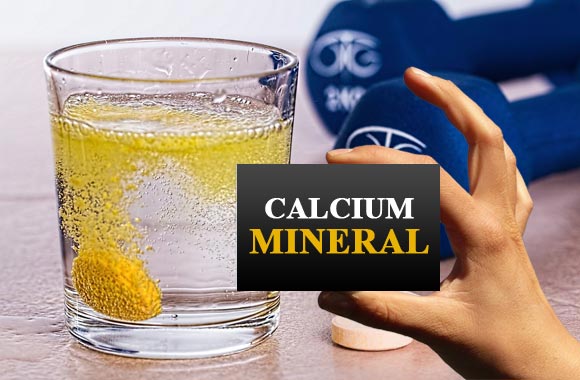
Calcium Benefits
Calcium is a major mineral element of the body. It constitutes 1.5-2% of the body weight of an adult human. An average adult body contains about 1200gram of calcium of which over 98% is found in the bones. The level of calcium in the blood is usually about 10mg/dl. The developing fetus requires about 30 grams of calcium. There is a dynamic equilibrium between the calcium in the blood and the skeleton and this interaction is maintained by the interaction of vitamin D, parathyroid hormone, and calcitonin.
Sources
Calcium is readily available from many sources.
Animal Sources: The most important and natural sources are milk and milk products e.g. cheese, curd, skimmed milk and buttermilk, eggs, and fish. A liter of cow’s milk provides 1100mg of calcium and human milk about 300 mg. Calcium occurs in milk as calcium caseinogen which is readily assimilated by the body. It is also present in egg yolk.
Plant Sources: it is also obtained from green leafy vegetables such as spinach, and amaranth and the limiting factor in the complete absorption of calcium is oxalic acid. It is present in cereals and millet, especially ragi. Some fruits contain a good amount of calcium such as Stiaphal.
An additional source of calcium is drinking water which may provide 200 mg of calcium per day.
Functions
Ionized calcium in the plasma has many vital functions. These areas follow:
It is helpful in the formation of bones and teeth. A sufficient supply of calcium must be ensured in early life to build up skeletal reserves. If this is not done, then there occurs an increased incidence of osteoporosis in old age.
It is needed in the coagulation or clotting of blood.
By causing regulation of the membrane permeability, calcium ions control the excitability of the nerves. If plasma ionized calcium level falls markedly, tetany results in which spasm of various muscle groups occurs.
Calcium ions act as cofactors or activators of various enzymes in our bodies. A protein known as calmodulin is present within cells which can bind calcium. The calmodulin-calcium complex becomes attached to certain enzymes which are activated. This mechanism is important for the release of acetylcholine at the neuromuscular junctions.
It takes part in the contraction of muscles including heart muscles and is also involved in the excitation and contraction coupling mechanism. These calcium ions can potentiate the effects of cardiac glycosides and therefore should not be given to patients who are using these drugs.
Calcium ions are responsible for initiating contraction in the vascular and other smooth muscles. Calcium ions enter through specific channels just as is the case with cardiac muscles.
It is essential for maintaining the integrity of the capillary wall.
Calcium ions are also involved in the exocytosis process and thus have an important role in stimulus-secretion coupling in most exocrine and endocrine glands.
Some hormones exert their effects through Calcium.
It exerts profound effects on excitable tissues.
Deficiency
At a young age, its deficient supply may lead to rickets in children, and in adults, it may lead to osteomalacia. Low levels also cause an increase in the contraction of muscles. But otherwise, no clear-cut disease due to calcium deficiency has ever been observed, even under the condition of low intake.
Surplus
Increased levels may affect the heart and lead to heart stops in systole and decrease the conduction of cardiac impulses occur and thus can produce a heart attack. It may lead to weakness, fatigue and constipation, and depression of the central nervous system. But again overall its use is safe.
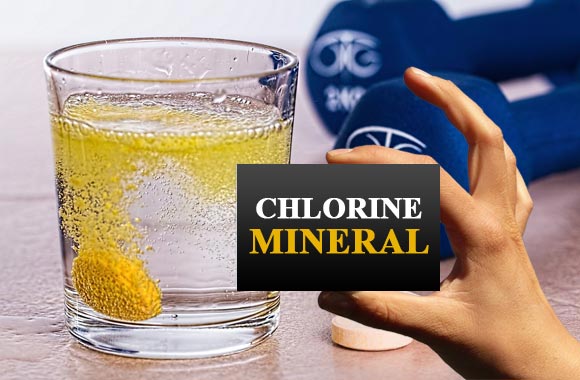
Chlorine Benefits
The element chlorine (Cl) is a poisonous gas. When chlorine is reacted with sodium or hydrogen, however, it gives rise to the negative chloride ion. Chloride mineral is required in the diet. It is the major anion present outside the cells and is closely related to sodium.
Sources
These include table salt, soy sauce along with
Animal sources: These include milk, eggs, a moderate amount of meat, and cheese
Plant Sources: A large number of processed foods, cucumber, coconut, banana, and pineapple are its plant sources.
Functions
Chloride is the major anion of the extracellular fluids, where it occurs mostly in association with sodium.
Chloride can move freely
The consumption of ordinary foods and beverages can restore chloride balance across membranes and so also associates with potassium inside cells.
Like sodium, chloride maintains fluid and electrolyte balance.
In the stomach, the chloride ion is part of hydrochloric acid, which maintains the strong acidity of gastric juice. One of the most serious consequences of vomiting is the loss of this acid from the stomach, which upsets the acid-base balance. Such imbalances are commonly seen in bulimia nervosa.
Recommendation and Intakes
Chloride is abundant in foods (especially processed foods) as part of sodium chloride and other salts. A recommended intake has not been established for chloride; instead, a minimum requirement for adults has been estimated.
Deficiency
Diets rarely lack chloride. Chloride losses may occur in conditions such as heavy sweating, chronic diarrhea, and vomiting. The only known cause of high blood chloride concentrations is dehydration due to water deficiency. In both cases, consuming ordinary foods and beverages can restore chloride balance.
Surplus
In case of its toxicity, no such ill effects are seen except vomiting occurs.

Chromium Benefits
Chromium mineral is the trace element that has been shown to have a role in binding insulin to cells and potentiating its effects on glucose metabolism. The metabolism of glucose then has a wide range of effects throughout the body.
Sources
Chromium is found in large quantities in relatively few foods. Some of its sources are
Plant sources: broccoli mushrooms, Brewers’ yeast Whole grains, and nuts are its plant sources.
Animal sources: Processed meats, milk products, cheese, coffee, liver, and tea are the richest food sources of this mineral. Chromium is now also available in other forms such as a dietary supplement which include chromium nicotinate, chromium picolinate, and chromium chloride
It seems that some people complain of its difficult digestion.
Functions
Chromium is one of the important minerals. Some of its important functions include
It improves the function of insulin in the body and may result in good control of sugar levels in the blood. It has been found beneficial for those individuals suffering from type II diabetes in reducing the level of insulin.
It provides relief from depressive symptoms in an individual with atypical depression.
Chromium may be beneficial in improving lipid metabolism by lowering bad cholesterol which lows density lipoprotein and increasing high-density lipoprotein which is good cholesterol.
It is beneficial in the maintaining of composition fat as well as muscles when weight loss is done.
Recommended Daily Dose
The recommended daily intake for chromium as given by the National Institutes of Health is:
- Children – 11 mcg
- Teenagers – 35 mcg
- Men – 30 -35 mcg
- Women – 20- 25 mcg
- Pregnant women – 30 mcg
- Lactating women – 30 mcg
For disease prevention recommendation of chromium, dosages are around 300 mcg per day, and dosages for the treatment of diabetes are around1000 mcg per day.
Deficiency
The deficiency of chromium may lead to impairment of glucose tolerance and also impair the ability of insulin to regulate glucose levels. Low levels of chromium result in very high levels of cholesterol and then there arises an increased chance of heart disease. There occurs insulin resistance, increased blood sugar levels, and impairment of lipids profile. Severe deficiency can even lead to peripheral neuropathy, weight loss, and meningitis.
Surplus
Chromium mineral is relatively safe and does not lead to toxicity but the use of its supplements can cause certain toxic effects on the body. Ingestion of very high doses of chromium supplements results in
- Reduction of the effectiveness of the insulin
- Irritation in stomach
- Liver dysfunction
- Little damage to the kidney
- Tachycardia
These symptoms are mostly due to excessive use of chromium picolinate supplements. Other forms of chromium supplementations are safe.
Supplementation
Owning low chromium levels it is preferred by doctors to utilize it in the form of either food or supplements. Its use can enhance the absorption of many other minerals so it provides dual benefits to the body.

Cobalt Benefits
Cobalt mineral is an important micronutrient in our body because it is needed in very small quantities in our body. It is stored in the liver. It is not soluble in water and is stable in air. It is seen that it can be attacked by some dilute acids.
Sources
It occurs only in foods of animal origin as a part of the molecule of vitamin B12 which contains about 4.3% cobalt. It is found in liver, meats, clams, kidney dairy products, goat milk, raw milk, oysters, apricots, and some seaweed.
Functions
It performs various functions in our body such as:
Cobalt affects blood formation by being incorporated into vitamin B12.
Microorganisms in the lumen of cattle and sheep utilize cobalt to synthesize vitamin B12.
The beneficial effect of cobalt in treating anemias of children such as thalassemia, sickle cell anemia, anemia associated with chronic infections, and chronic kidney diseases have been reported.
It forms the myelin which covers the nerves.
Cobalt is found to be necessary for the early stages of hormone production i.e. capture of iodine by the glands. It may interact with iodine and affects its utilization.
Cobalt produces hyperplasia of the bone marrow leading to polycythemia. This is brought about by increased erythropoietin synthesis.
This nutrient also activates some enzymes e.g. those involved in the conversion of pyruvic acid to acetyl CoA and of alpha-ketoglutaric acid to succinyl-CoA and the action catalyzed by homocysteine methyltransferase in methionine metabolism.
The beneficial effect of cobalt on erythropoiesis is seen in pure red blood cells aplasia of the bone marrow but not in aplastic anemia.
Deficiency
The deficiency of cobalt occurs in people who strictly eat vegetables only and no meat since cobalt is of animal origin. Its deficiency results in a lack of vitamin B12 which is essential for various reasons and, therefore, lead to pernicious anemia and some nervous system manifestations. These symptoms are also associated with fatigue, circulation problem, gastrointestinal problems, and myelin sheath not being properly formed. It may also lead to a slow growth rate.
Surplus
An excess of cobalt is very toxic and can produce cardiac myopathy, goiter, and nerve deafness. It makes a complex with lipoic acid and interferes with the decarboxylation reaction critical to both pyruvate and fatty acid metabolism. It is eliminated from the body almost entirely by the kidneys.
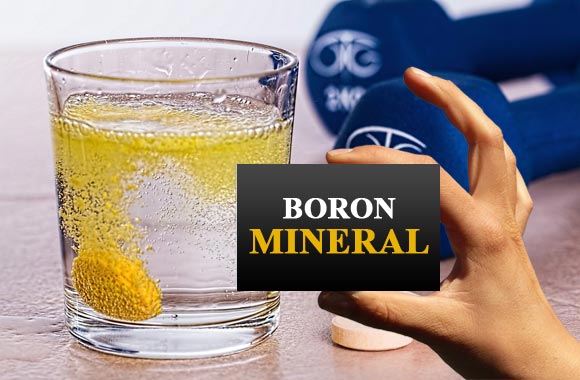
Boron Benefits
Boron is a trace element in our body. It is also found to be important to human health and human behavior. The word boron originated from the Persian and Arabic words “borax”, which is a compound containing the element boron, It is usually found in those places where dry climates persist. Its importance to the human body came to be known in the year 1980. In the body, the boron mineral is present in the bone as well as in the thyroid gland.
Sources
It’s richly present in plant kingdoms. It is found in prunes, soybeans, peanuts, red wine, raisins, dates, almonds, hazelnuts, apples, cherries, peaches, grapes, cabbage, beet, greens beans, legumes, broccoli, pears, and nuts.
It is also found in the soil as well as in drinking water.
Functions
Boron causes stimulation of Vitamin D in the body which is essential for bone mineralization. Since this mineral is important in the calcium metabolism and activation of vitamin D it, therefore, prevents the development of osteoporosis. It causes a delay in the appearance of symptoms due to calcium deficiency but it has no role in replacing it. Boron keeps the calcium soluble.
Boron also plays a role in being the regulator of calcium potassium ratios and is also helpful in the absorption of nitrogen.
It also seems to be playing a useful role in the oxidation-reduction equilibrium in the cells.
It is also helpful in maintaining levels of phosphorus and copper as well.
It even causes the prevention of osteoarthritis and is beneficial in its treatment.
It is found to reduce the symptoms of arthritis as well as its incidence. This is because of the connection of the boron with the joints. In those areas which contain a good concentration of boron in their solid and drinking water, the incidence of arthritis is found to be very low among the people of that area.
Beneficial effects of boron can also be seen in postmenopausal women. Boron is especially important to them if they are deficient in magnesium. Boron supplementation can lead to improvements in both magnesium and calcium. It prevents magnesium excretion from the body. Boron also provides the following effects on the human body.
It causes an increase in the concentrations of the hormone testosterone in the serum.
Boron results in elevations of levels of estradiol which is the estrogen’s very important by-product in the serum.
Recommended Dose
- In children, it is about 1.5 mg.
- In males of ages 11 to 18 years, it is about 2.0 mg.
- In adult males daily recommended dose of boron is about 2.0 mg.
- In females, the daily intake of boron is around 2.0 mg.
- Postmenopausal women should take 3.0 mg.
- Pregnant and lactating women should take 2.5 mg daily.
Deficiency
Lack of boron in the body leads to an increased incidence of development of certain metabolic diseases. It may lead to the development of arthritis as well as other joint and bone degenerative diseases. Calcium and magnesium levels cannot be maintained due to boron deficiency which is needed to be maintained for the proper functions of our central nervous system. Following symptoms may be seen in case of its low level. There will be bone or joint pain, symptoms of depression also with stress, and other CNS manifestations.
Surplus
A Surplus of boron does not lead to major effects on the body.


